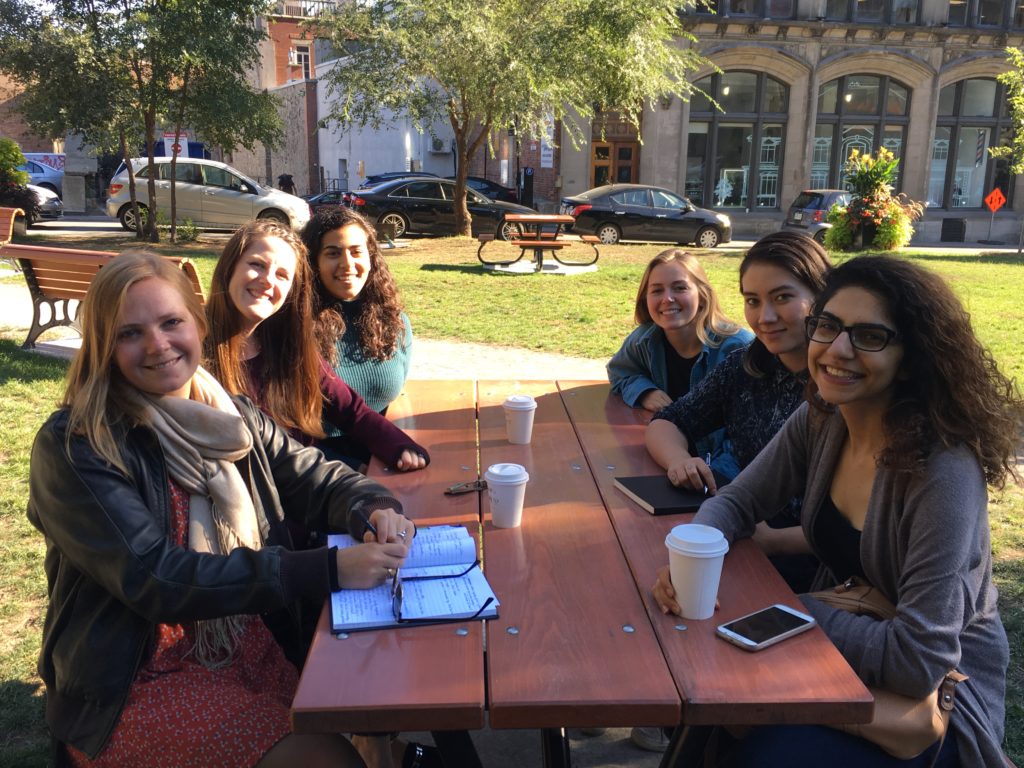A talk with Kathryn Travers from Women in Cities International about the principles of design that shape our perception of the places we live in.
Alexandra Jurecko, Montreal, Canada, SSH Blog Correspondent

The first part of my interview with Kathryn Travers from Women in Cities International (WICI) revolved around everyday street harassment in Montreal and other urban centers and the culture that enables it. This second part sets out to explore how design influences the ways in which we perceive our surroundings and how urban development could make our cities more inclusive and safe for everyone.
Design can be a powerful factor in shaping our perception of public space. Just in thinking about my own neighbourhood in Montreal, I immediately know which places feel open and comfortable, and which routes I like to avoid at night. “There are important gender gaps that should be addressed in cities”, says Kathryn.
When it comes to implementing design principles to create safer public spaces for women, “Montreal is actually kind of a pioneering city,” Kathryn points out. Six of the seven principles of design employed by WICI to conduct women’s safety audits across the world have originated from the Femmes et Ville program conducted by the City of Montreal in the 1990s.
These principles were developed by the City of Montreal to create a standard for gender-inclusive urban planning. “One of the first applications of these principles of design were the Montreal metro station exits”, explains Kathryn. “Before, you would walk up from the metro and be in this closed brick box. You never knew what was on the other side.” By implementing the first principle of design, “See and be seen”, the city redesigned the exits to be more open, with window fronts for better visibility.
The principles furthermore include instructions on how to ensure the ability to “Hear and be heard”, to “Get away and get help”, to “Know where you are and where you are going”, to “Live in a clean and welcoming environment”, and lastly, to “Work together” through community participation and social activities. Their work on the Creating safer Communities for Marginalized Women and Everyone project (2007-2011) inspired WICI to add a seventh principle of design, the principle of “Accessibility and Inclusion”.
WICI’s approach is based on cooperation with local groups: “These groups already have an established relationship of trust with local women.” In doing so, WICI gives local groups the tools to document their experiences while allowing them to develop their own ideas and recommendations for change. “We never come with solutions. We don’t have solutions,” Kathryn stresses.
By reaching out to those who are most excluded within their own communities, WICI strives to make cities more inclusive for everyone. “If we can be more inclusive now as we are working to address these gender gaps”, Kathryn explains, “then our cities will be able to better respond to the diverse needs of women and men who live there. This is how we build more inclusive cities.”
One such project brought WICI together with women from the association of Action de femmes handicapées in Montreal. In their work together they focused on the relocation of a paratransit stop at a Montreal university. “The paratransit stop was in the loading dock in the back of the university. These women who are wheelchair-dependent had to wait in the loading zone after classes at night; it made no sense,” remembers Kathryn. Once a local group has identified a problem, WICI supports their cause by establishing channels of communications to municipal or state-level governments. “We lobbied to move the stop across the street where there was already a bus stop and a space to wait with proper lighting. It took a lot of time but we eventually got it. It was a really significant achievement.”
In focusing on gender equality and women’s participation in urban development, WICI highlights how design influences the ways in which we move through public space. Design can force us to experience exclusion, or make us feel unsafe. Or, in adhering to basic principles of design, urban planning can become a powerful tool in making our cities safer and more accessible for everyone.
Alexandra is a freelance writer and recent graduate of Heidelberg University in Germany, where she earned a BA in South Asian Studies and English Literature. Having moved across the pond to live and work in Montreal, she now focuses on refreshing her French skills while volunteering her time to various community-outreach programs. You can follow her on twitter @alexjurecko.
